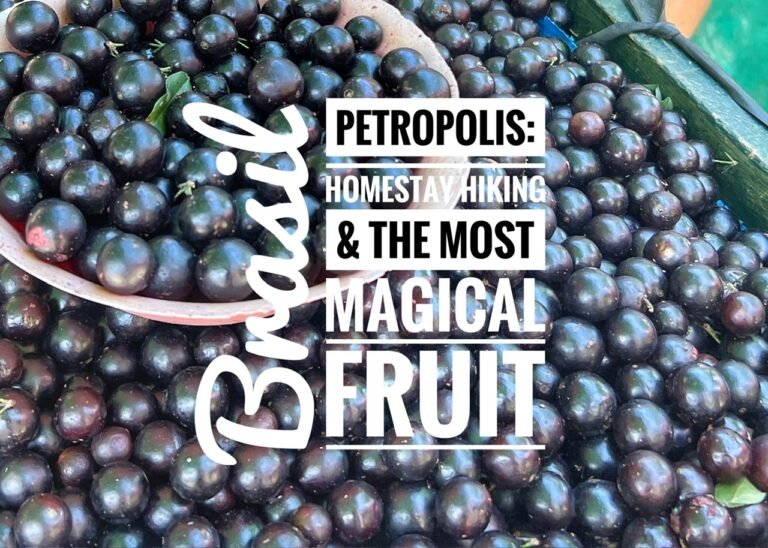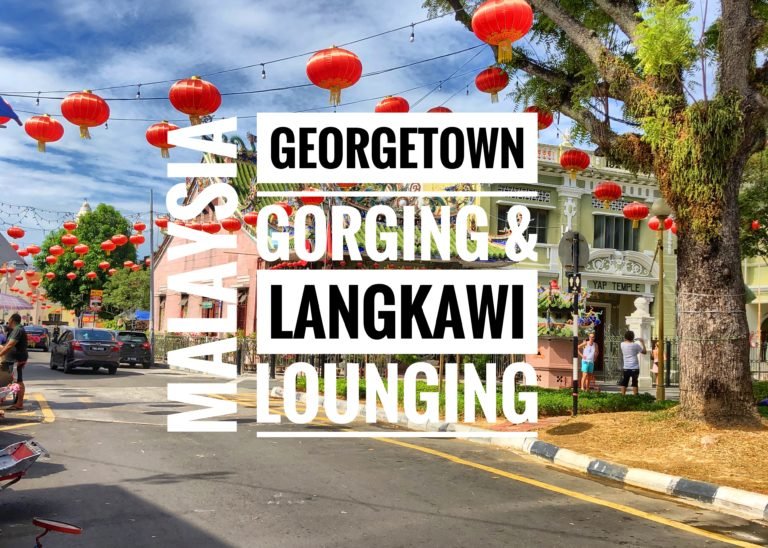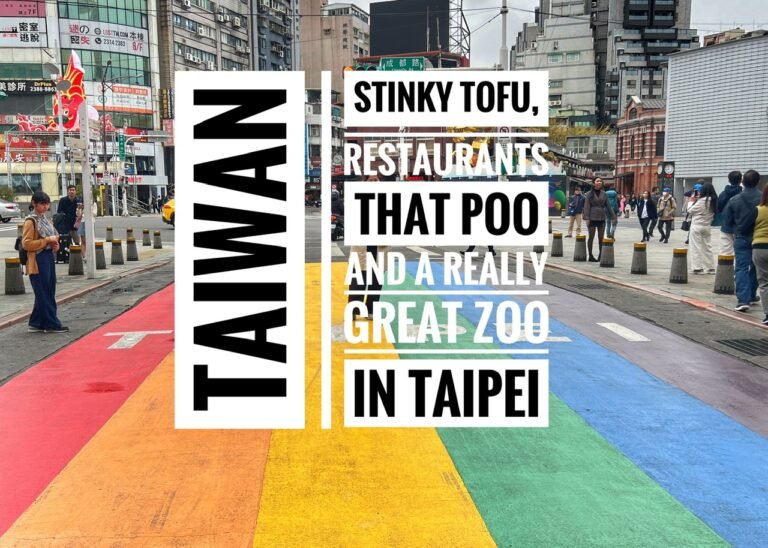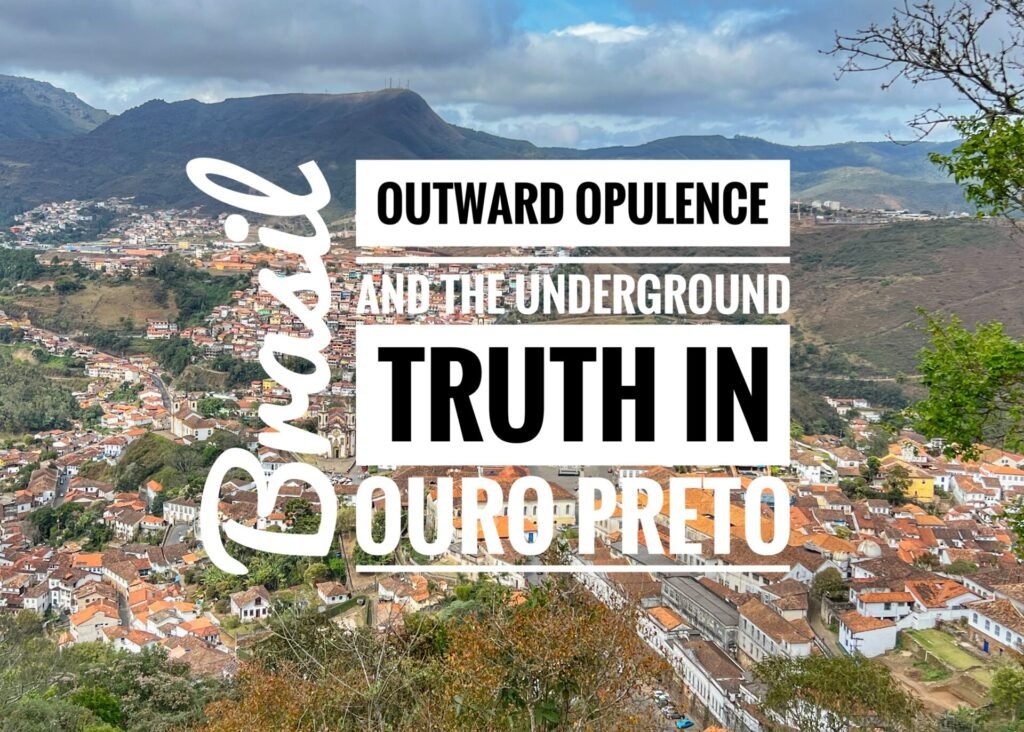
More than 100 years before Australia or the US was having its crazy Gold Rush, Minas Gerais was well ahead of the curve. In fact, until the last order of the 18th Century, Minas’ mines were producing half the world’s gold. According to many, Ouro Preto is the crown jewel in the often overlooked former gold mining state of Minas Gerais. In the mid-18th Century, it was also on track to become a major world player in both population and wealth at 110,000 people people compared with 50,000 in New York City and 20,000 in Rio de Janiero at the time. During the Gold Rush, the city was inundated by opportunists from all over the world trying to dig luck out of the ground, although most of that work was of course done by…enslaved people.
This wealth painted the ridge lines and ravines of the terrain with a sea of opulence and some of the most exceptional architecture in the Americas at the time, which has awarded its UNESCO world heritage status today. There are literally no 20th Century buildings. What a treat! It is the most visited mining town in the state and has also started to gain more traction with foreigners (often those flying drones around.)

Exploring Ouro Preto
It is an absolute exquisite town at first glance that could easily be confused with cities we’ve seen in Spain or Portugal and even with shades of Salzburg, Austria. Of course, it also has a fraction of the visitors.
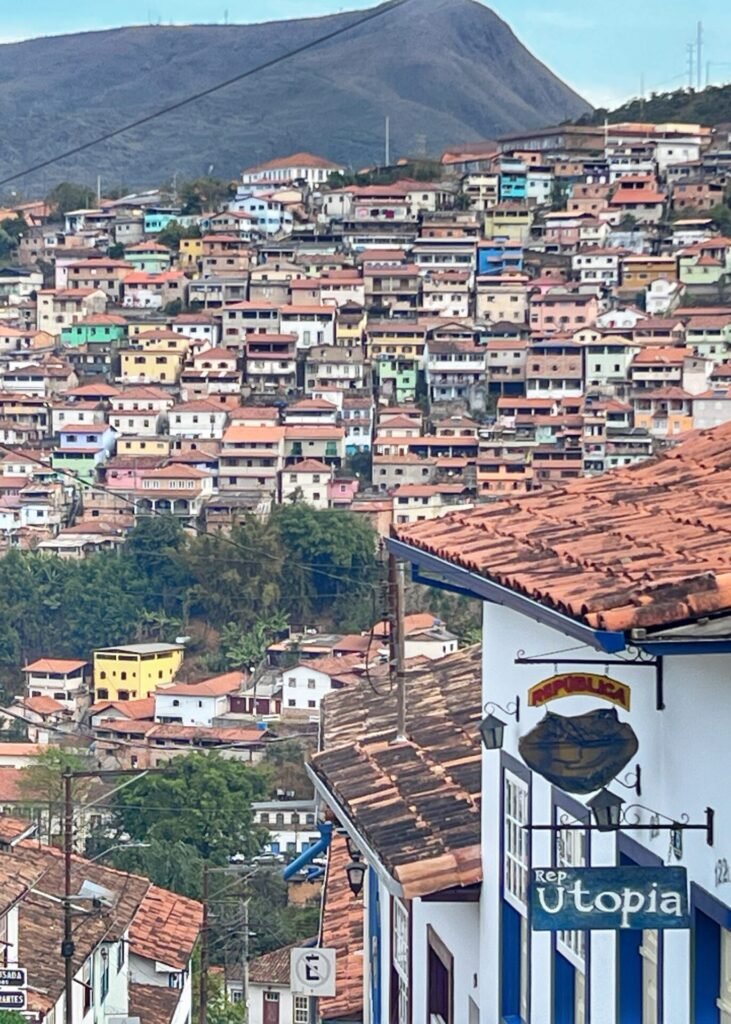
But, it also has a strong taste of Latin America in the way it colorfully stacks itself along the hillsides.
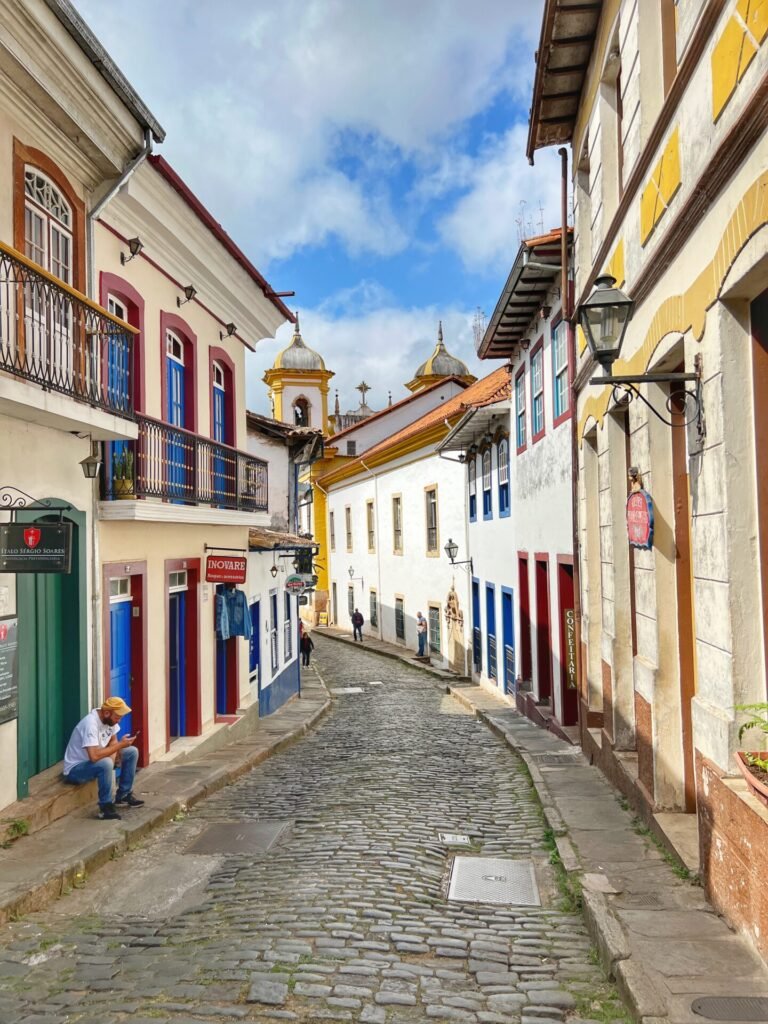
And on that note, the flat parts of the city, which wasn’t many, felt a lot more enjoyable than the ones accessed by vertiginous glut-busting hills, which we encountered regularly due to our location(s) outside of the center and trying to see a lot of it. It’s not exactly a place for romantic strolls around a charming colonial city. That is, unless you’re into some serious huffing and puffing with your mate.

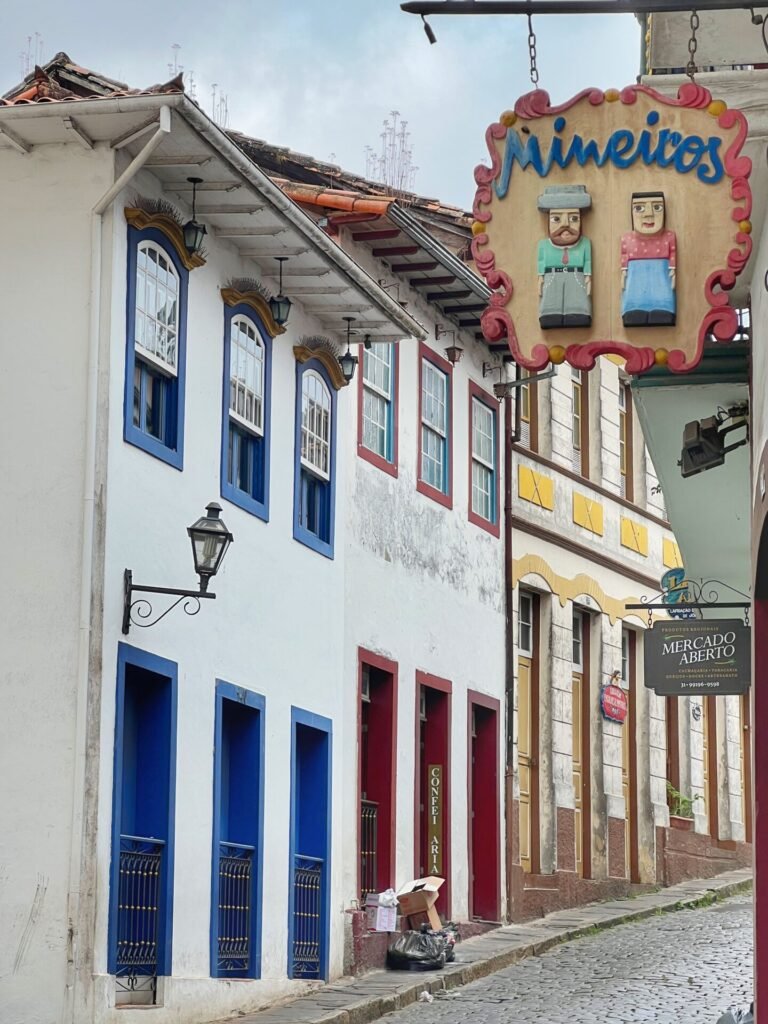
Little tastes of Central Europe were found it its signs and framing. And some, look like they fell right out of Deutschland.
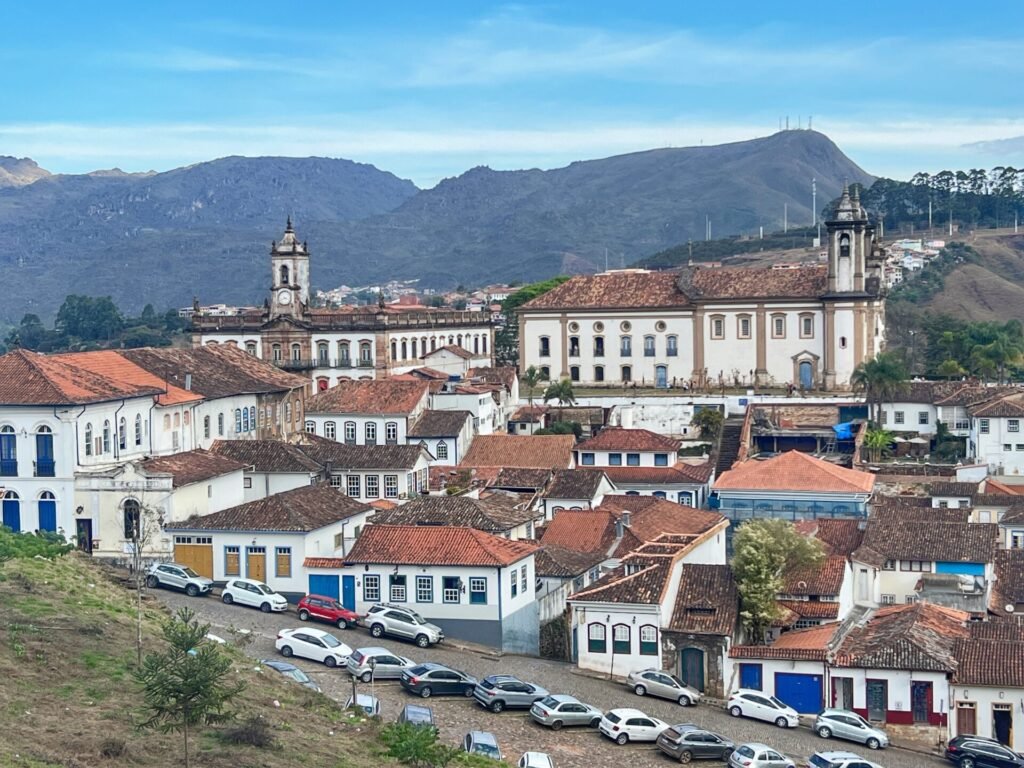
The view walking into old town from our (first) apartment. To the left is Praca Tiradentes, which is the heart of the historic center.


It doesn’t matter where you look on the skyline, you will spot a church, and in many cases, a funny peak in the distance that looks like a romping dolphin. We had a lot of clouds and humidity during our six days in the city.

After the gold boom busted, mostly with the ending of slavery, Ouro Preto metamorphosed into a university town. Hence, a beautiful and historic academic observatory.
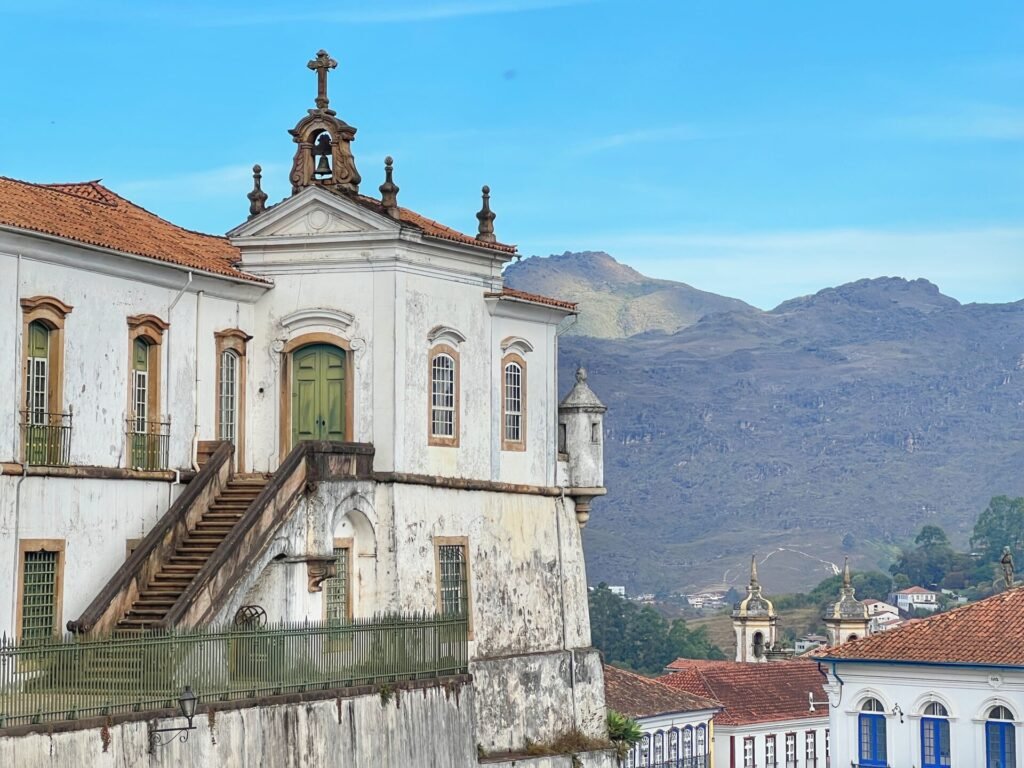
No matter where you looked, a photo awaited.

Plaza Tiradentes, of course, named after the same tooth pulling dentist turned revolutionary as the town of Tiradentes.

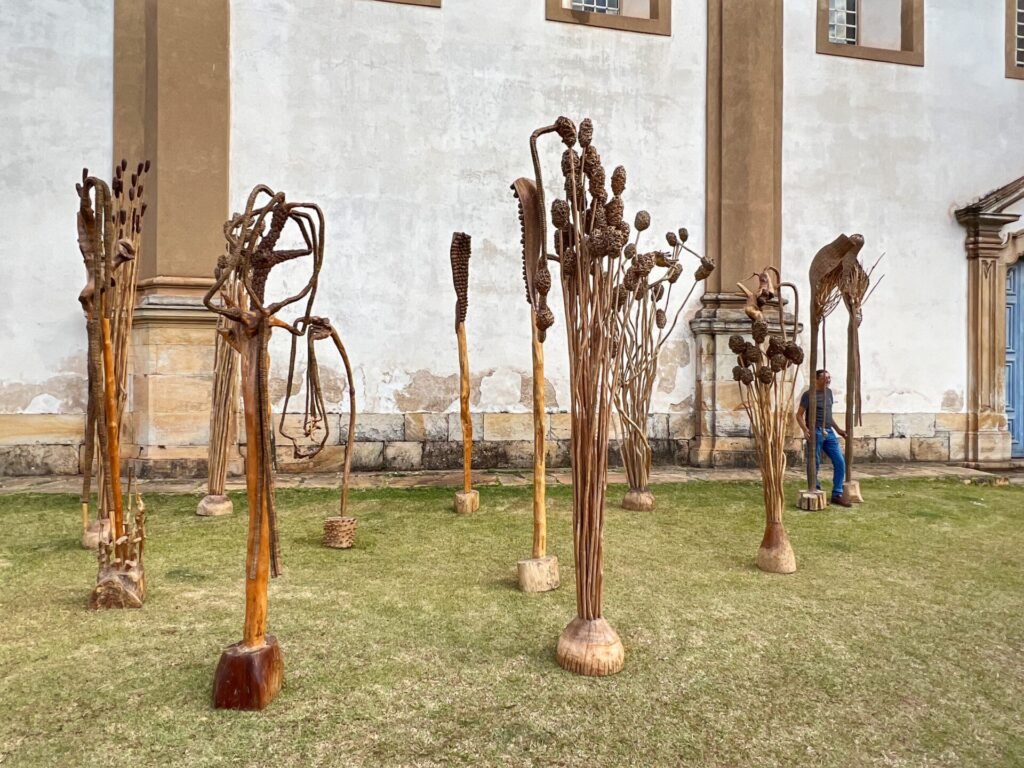
A massive spool of reed and wood “ribbon” as part of an art installation at one of the churches. Nothing like using natural materials to create natural looking art. So interesting!

We don’t know the story behind this statue on top of the Museu da Inconfidencia. We’re guessing this guy is either here to threaten you as he weighs your gold or your debts. Perhaps as some sort of judgement?

The Church of our Lady of Carmo was built between 1766 and 1772 by the area’s most notable artists including Aleijadinho. You can see some of intricate details made of soapstone on the front. Aleijadinho was famous for using whimsical swirling celestial clouds, which looked a lot like lollipops to us.

A lady cleaning dishes in a local restaurant.
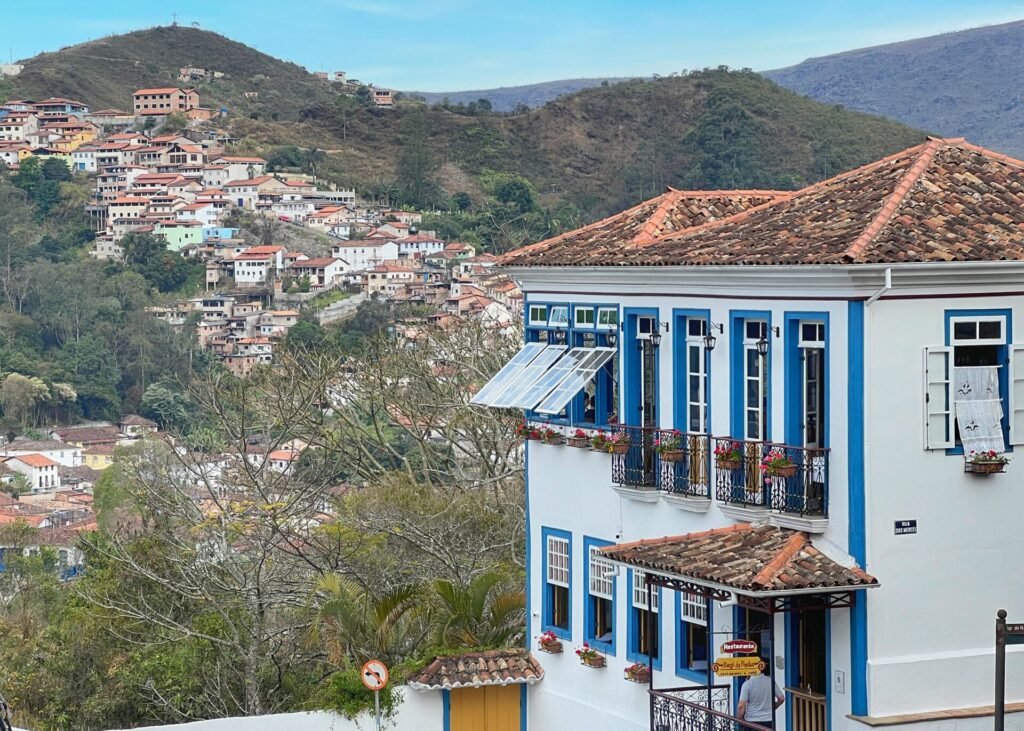
Speaking of that, you won’t have trouble finding a restaurant with a hell of a view.

We learned that all the churches were originally painted using earth-hued clay from the gold mines buried within the city. Today, some retain the golden color.


Built in Rococo or Late Baroque style in the 1730-1760s, the Igreja de São Francisco de Assis, according to Lonely Planet, is Brazil’s second most important piece of colonial art. Its entire exterior was carved by the great sculptor Aleijadinho himself, from the soapstone medallions to the cannon waterspouts. 👏 After, a historic photo of the same church. And there’s that funny little fish peak too!

In front of this church is where you can find the Artisan Fair of Ouro Preto. These crafters sell extraordinary works made from mostly stone and soapstone. We couldn’t help but ogle the hearty stone and copper pots for a house we don’t have, and the obviously far-from-backpackable stone water dispenser lined with the ever prevalent Brazilian elephant. 🤣
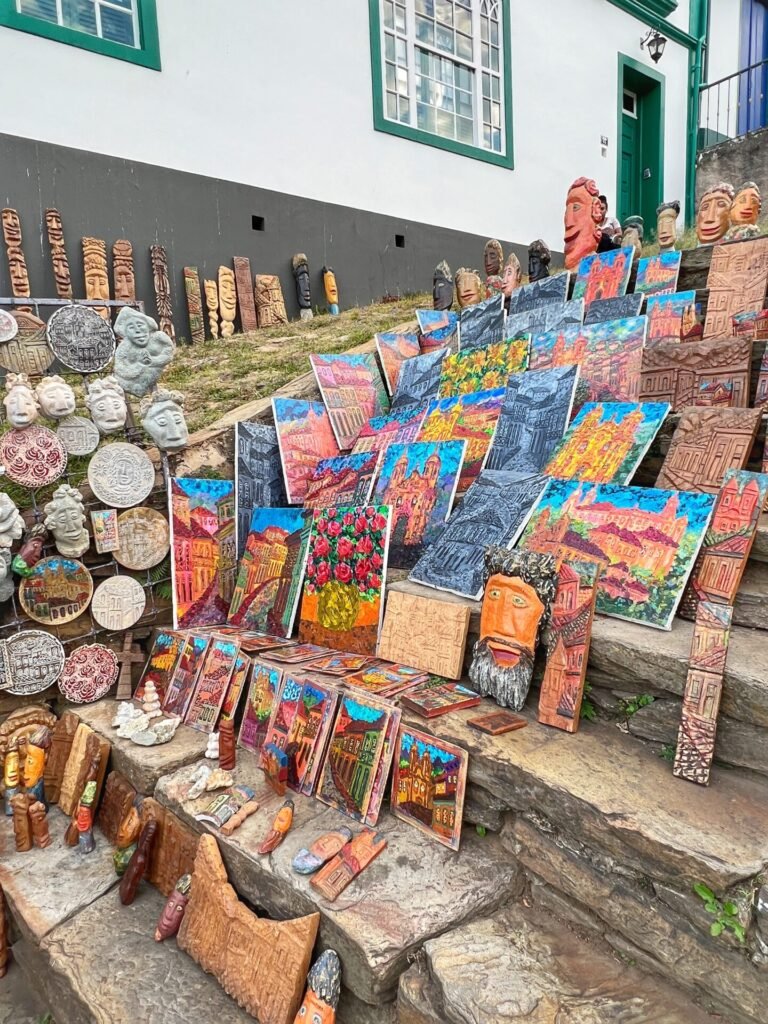
More beautiful works of art.

Looking east toward what is known as the slave church. We never felt like making the slog, but it was created by the slaves, and for the slaves using savings from deflected gold collected from their hair and fingernails. Hard to believe.
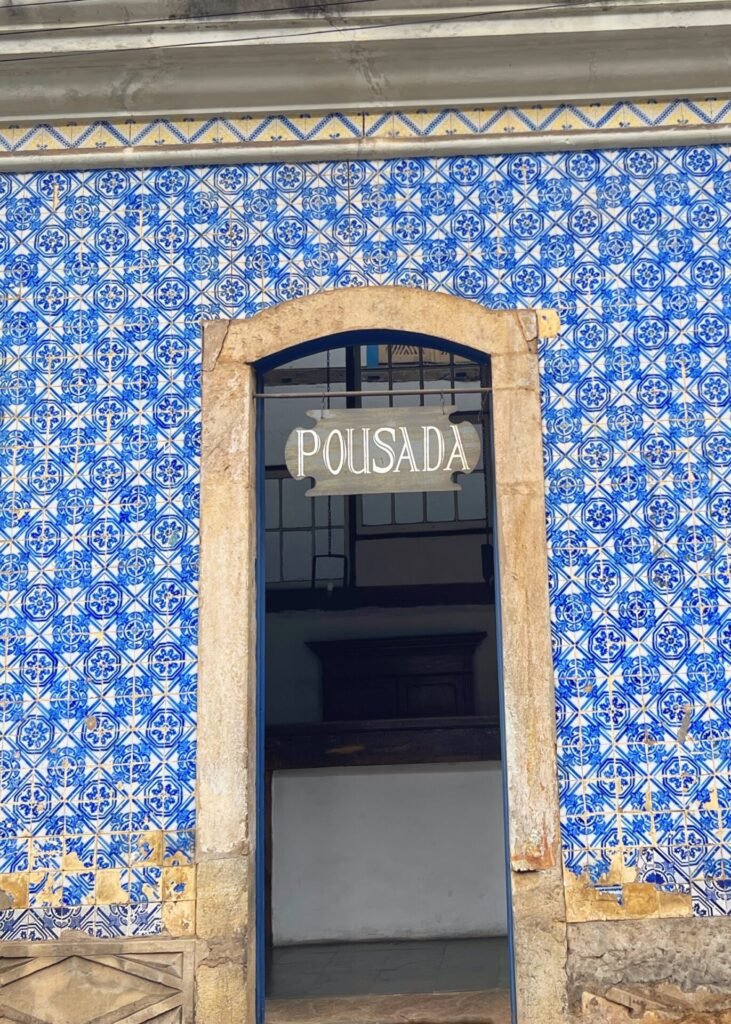

Not surprisingly, throughout Ouro Preto, we also noticed many signs of Portugal including splashes of blue azulejos. (Tiles)
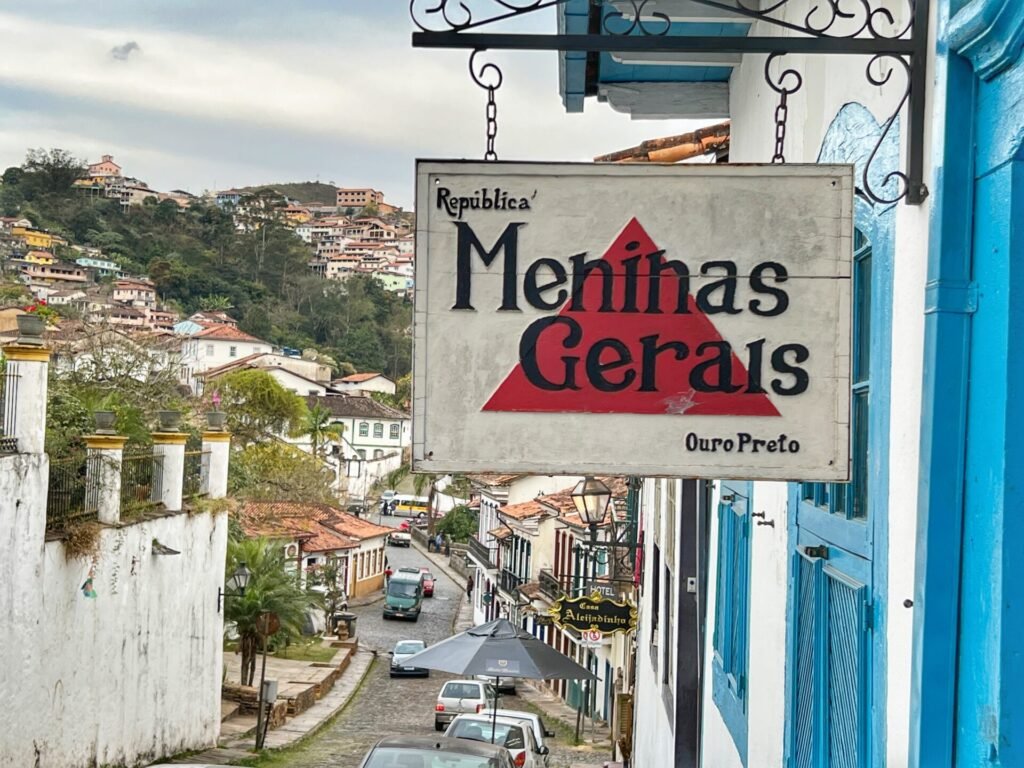
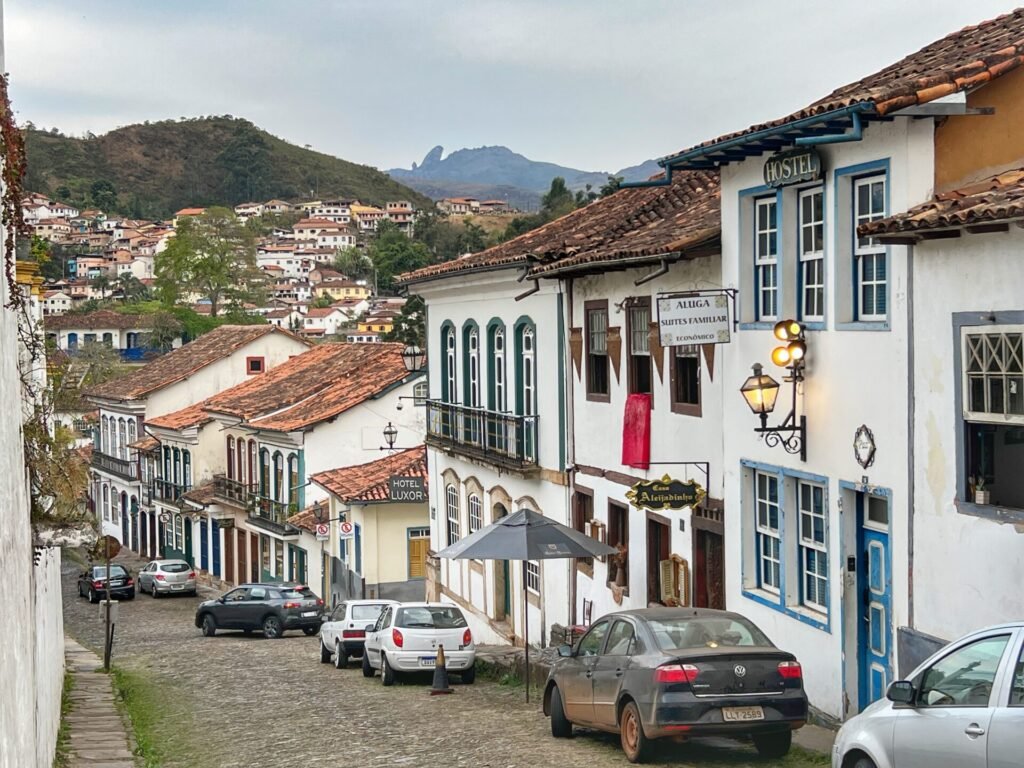
More irresistible signs, on more cute streets

Even the baby/dog gates(?) are cute.


Make sure you have your walking shoes, and are prepared a workout!

With lots of water…or craft beer which is wonderfully inexpensive at 13 Reais ($2.50)
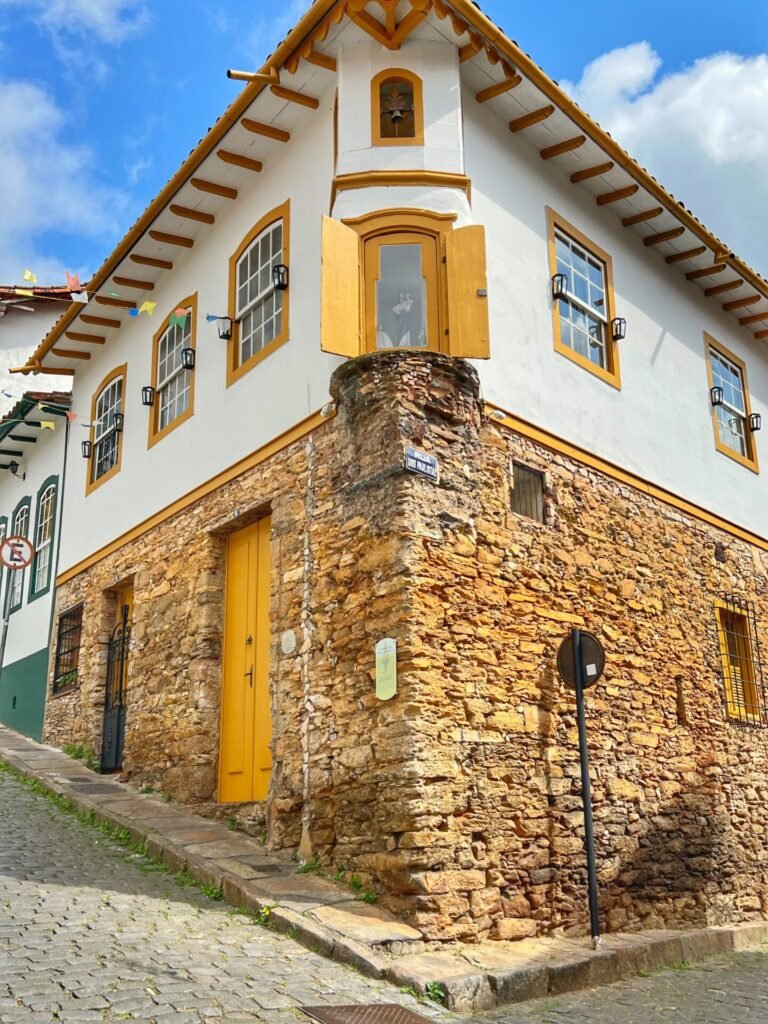
What unique architecture! Especially the altar to Mary tucked into the corner of this home.

More stone…even in their crosses.
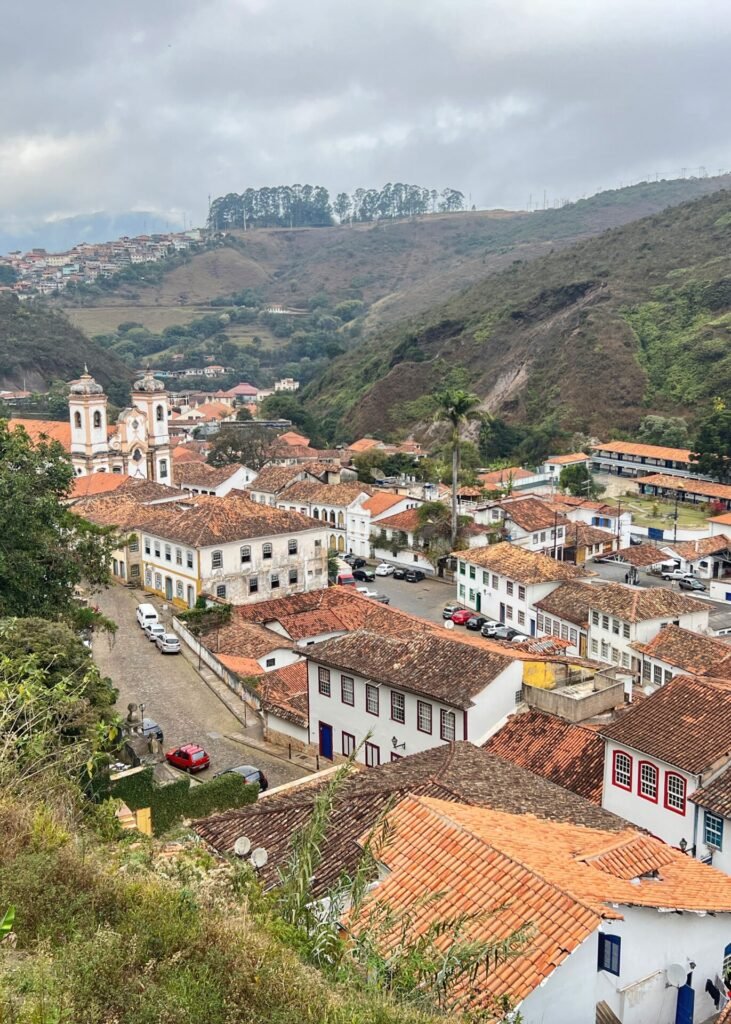
A viewpoint of the lower historic center not far from our apartment.

Winding narrow streets tangle the upper and lower portions together.
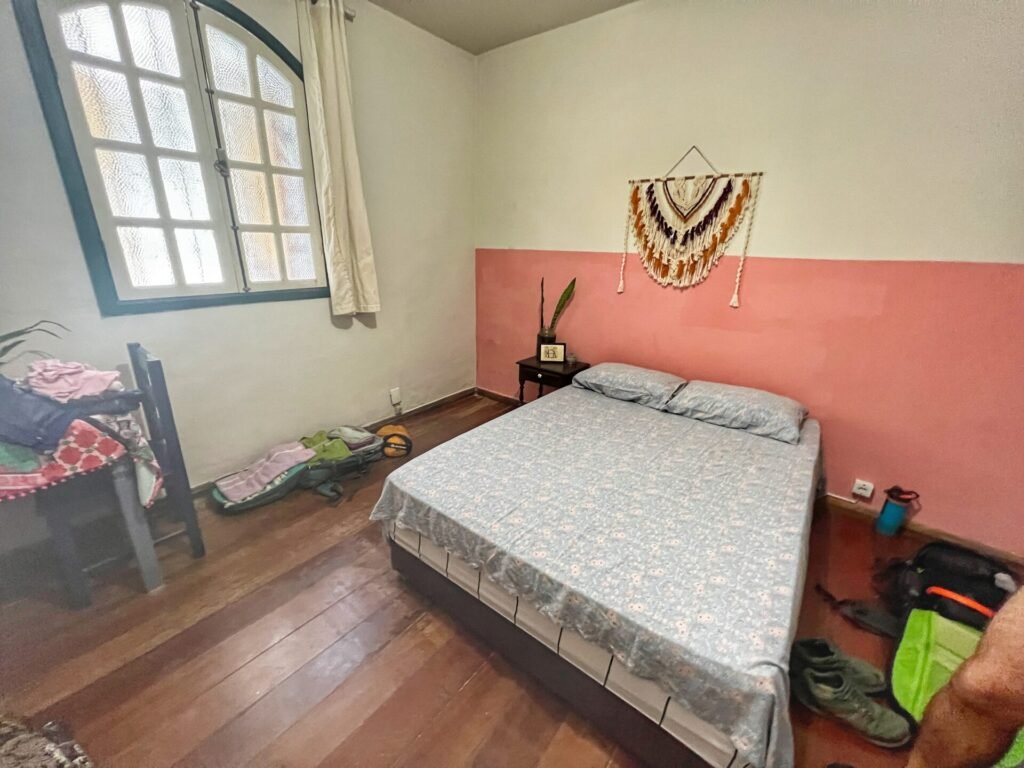
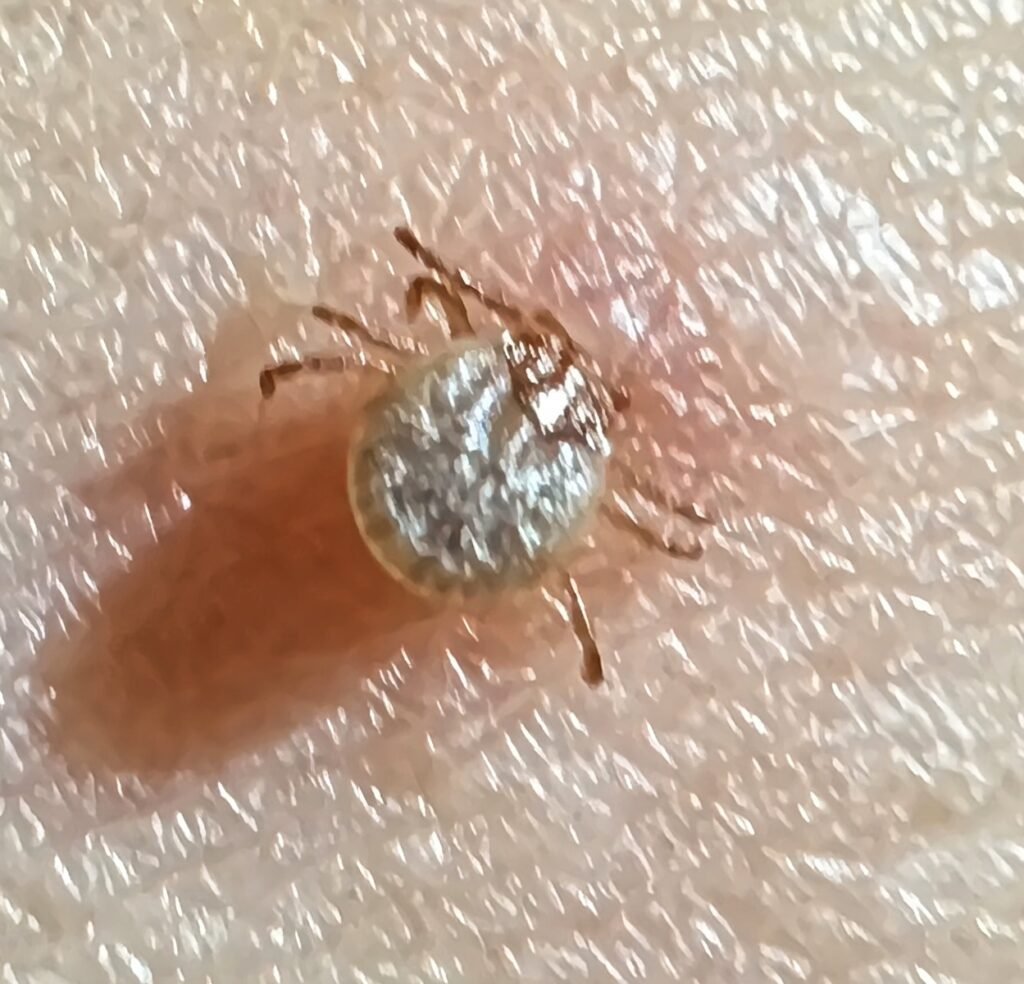
We stayed in two different apartments over our five nights in Ouro Preto. The first two ($24/night) was with a nice guy and his seven cats an arduous walk out of town. Unfortunately, we’ve learned (for the final time) that staying with bachelors is not always the best idea because it was quite icky, and we also managed to pick up five garrapatas (ticks) in the process. Likely from his cats, but who knows. These garrapatas would come back to haunt us over the next two months.

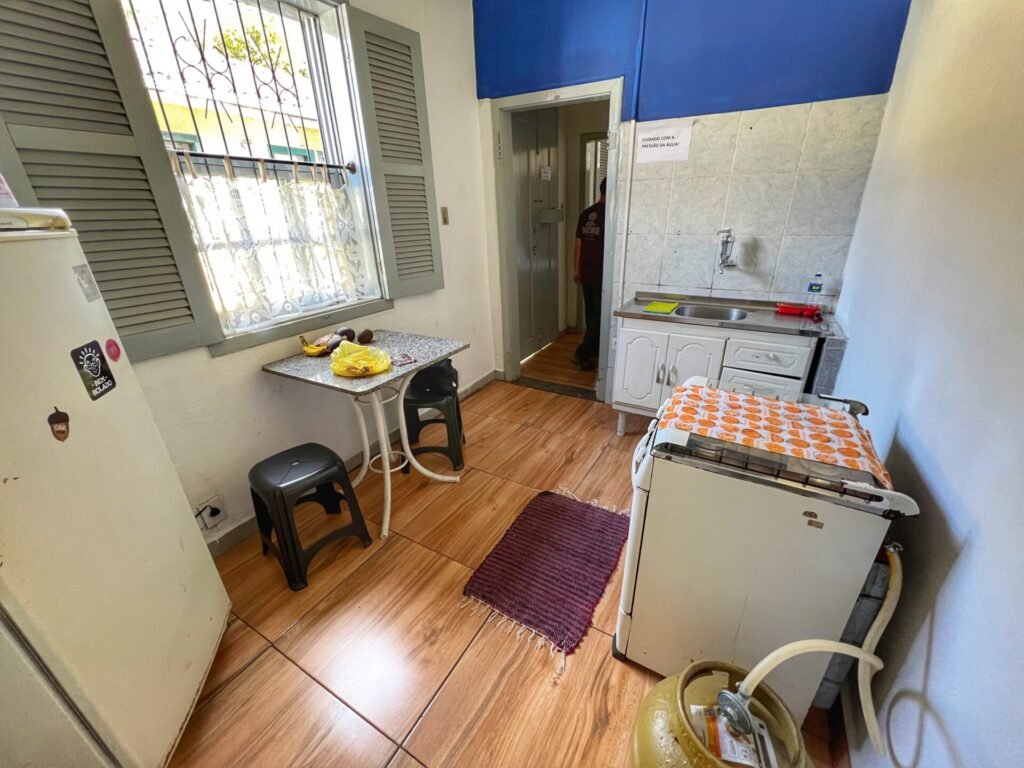
That said, we relocated to our own slightly better place for $21/night, but Brazil remains far from value we’ve gotten in other South American countries.
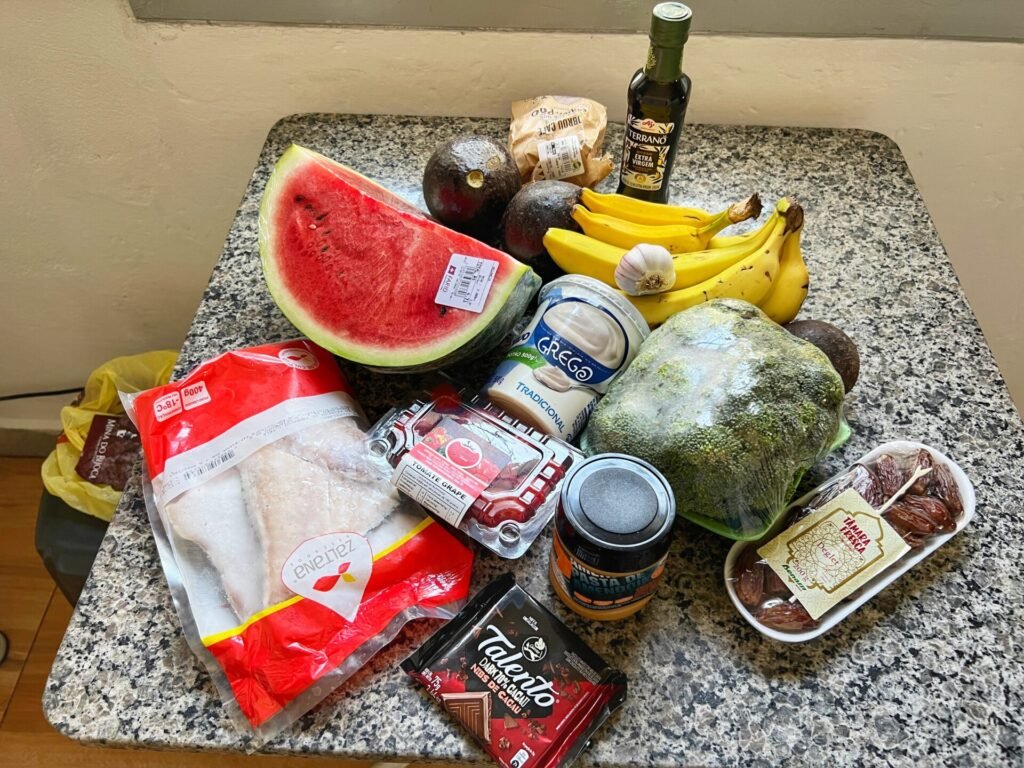
However, we must admit the groceries magically became far cheaper as soon as we moved away from the State of Rio de Janiero. Like 40% cheaper. This run was 95 Reais ($19), and included a bag of frozen Tambaqui (Amazonian fish) for $2.50, peanut butter ($3) and a sizeable Greek yogurt for $2.40. The three avocados were free, scavenged from street trees.

A local produce market in Ouro Preto.
Hiking in Ouro Preto
One thing we did really love about Ouro Preto was the nearby hiking…as soon as we climbed out of the city. Of course, we could have avoided this summit had we taken a local bus, but guess our bums were glut-tons for punishment.🤣
The hike we did took us to three distinctive falls…one comparable to Slide Rock in Arizona (minus the crowds), one hidden triple waterfall, and one tucked inside a cave. It also included an arresting view of the city, a quaffable end cap, and a dog we named…Preto, which means Black, because he was, and you know, Ouro Preto….

The view of Ouro Preto as we headed up the hill north of town. It actually made it worth it.


Oh yeah, those hills…bring your water!
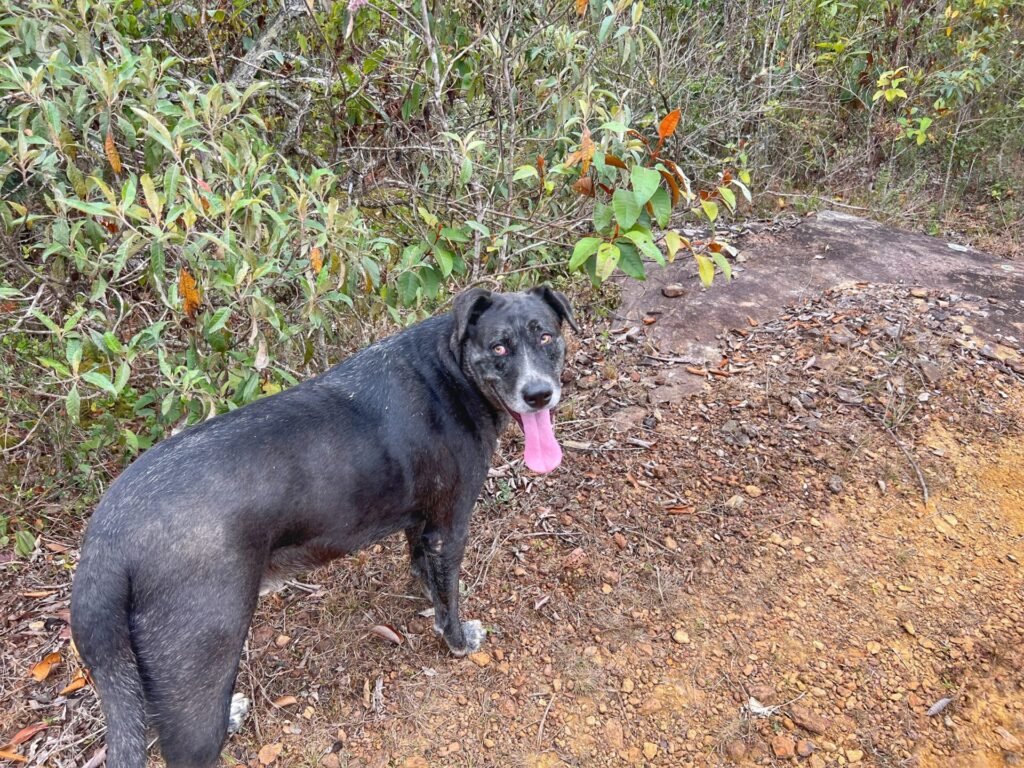
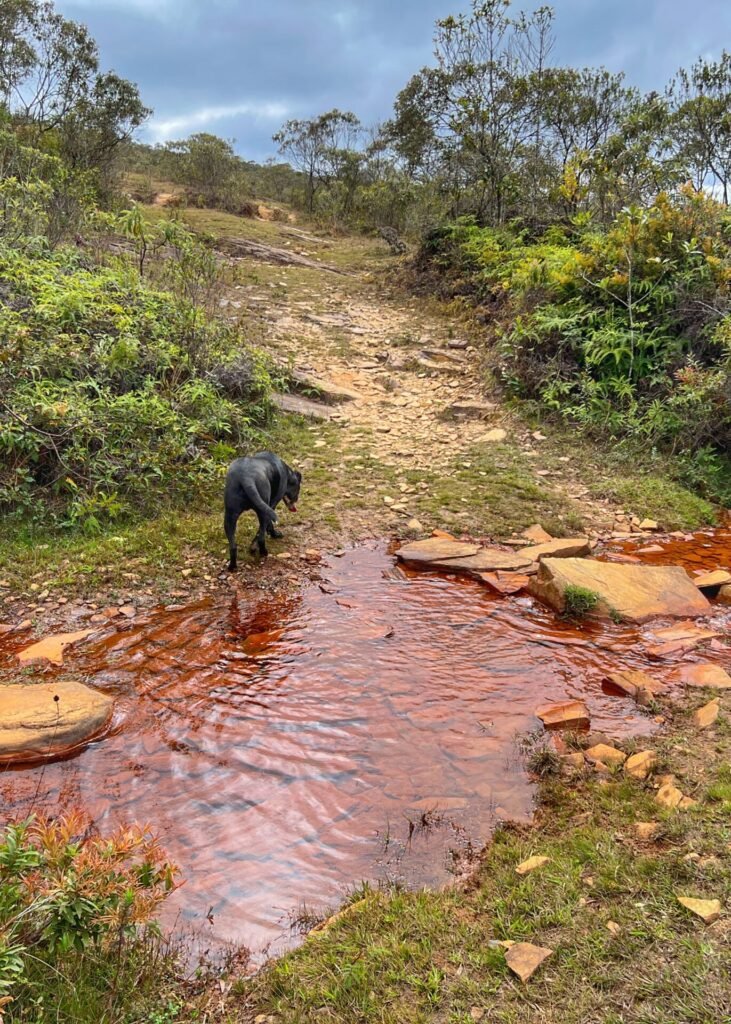
Preto, who we picked up right before we left the road to start the trail at presumably his house, fortunately also managed to find plenty of water along the way. We were amused that he followed us all the way to the final waterfall and back, despite all the other people we crossed paths with along the way.

The terrain, although a good eight hours from the ocean, was blanketed in sand and until we got to the turn off for the waterfalls near the road, was completely empty.

An idyllic place for these guys to sunbathe. Fortunately we didn’t cross any of their paths along the way.
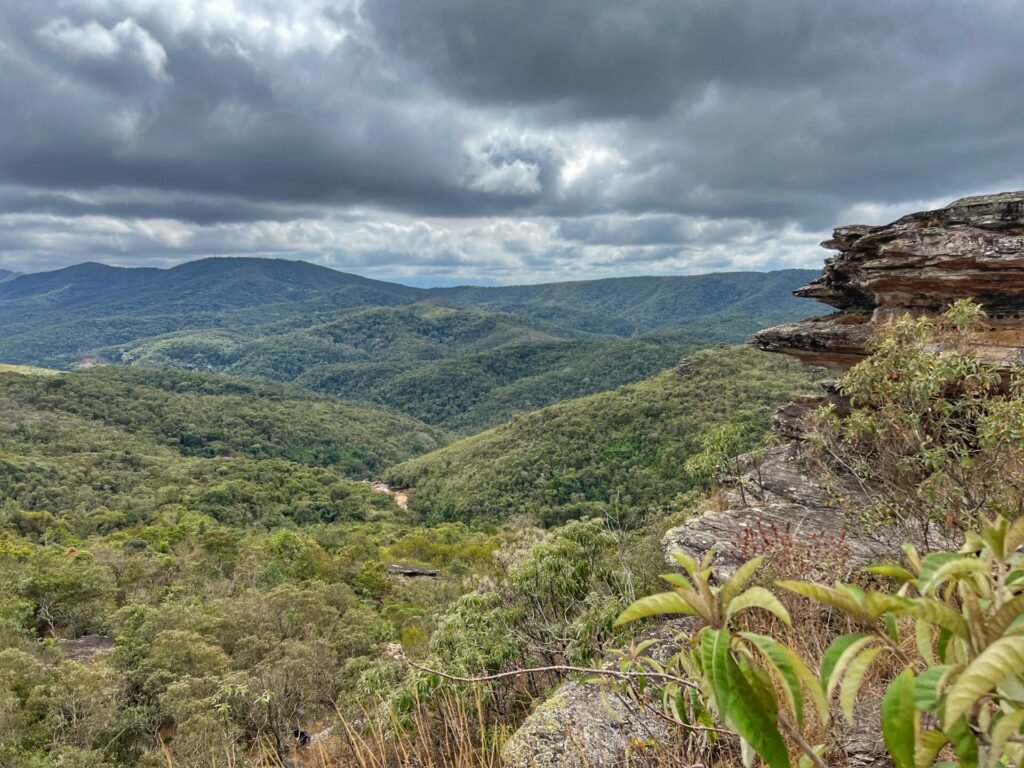
Towards the end of the path, we were met with an expansive view of the surrounding mountains.
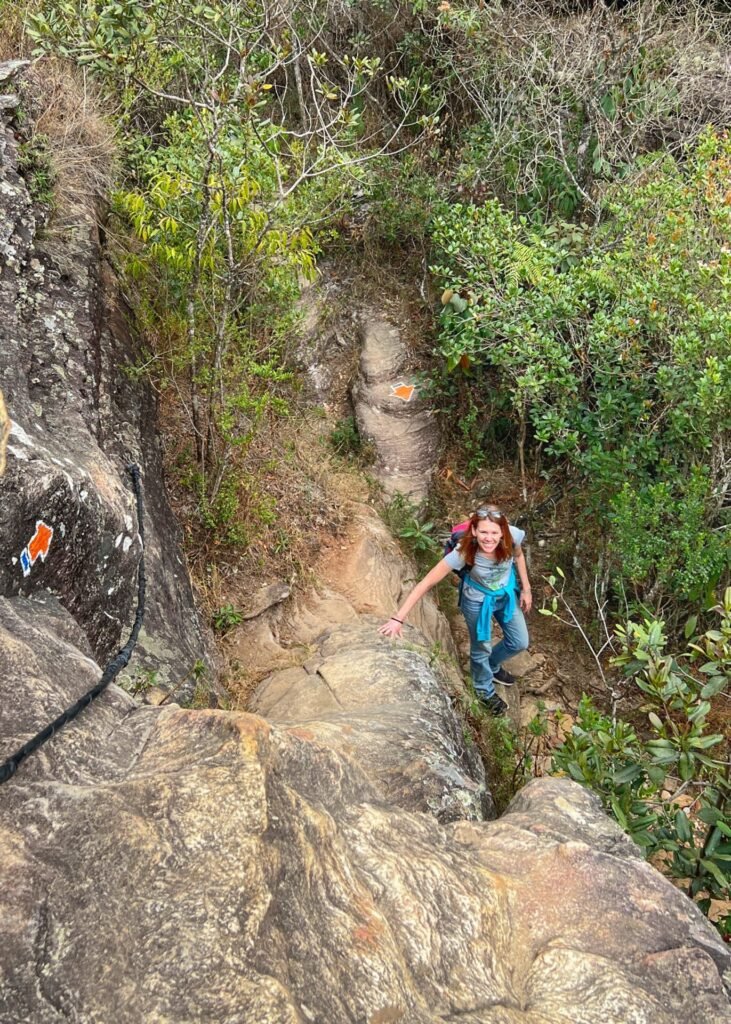

This particular part of the trail, near the parking lot, was well signposted with colors. It was a bit of a scramble heading down. We, along with Preto who continued to tag along, made it to the furthest waterfall, Cachoeira Véu-da-Noiva (Bridal Veil Falls) which was a series of waterfall pools flowing into a falls off a very steep cliff which we were atop. Presumably because it was the furthest, it was also nearly empty.

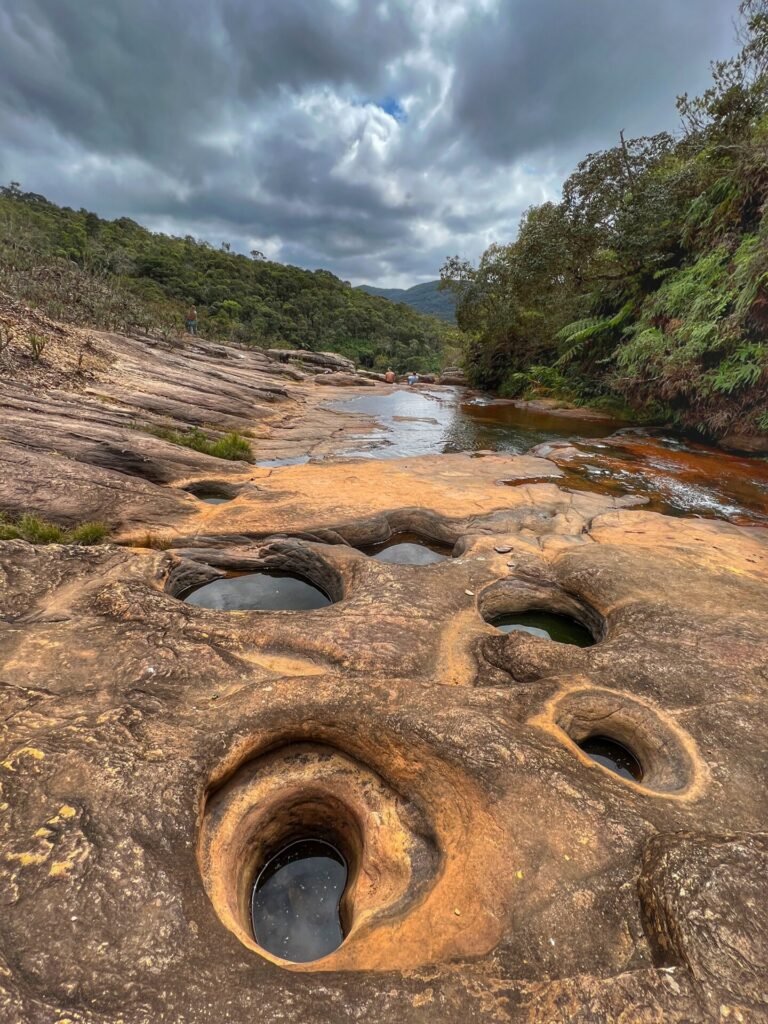
The final water feature looked like it had natural sandstone holes made by a giant dinosaur paw. This could be very fun on a hot day. It was pretty mild the day we went so we didn’t feel like stripping.
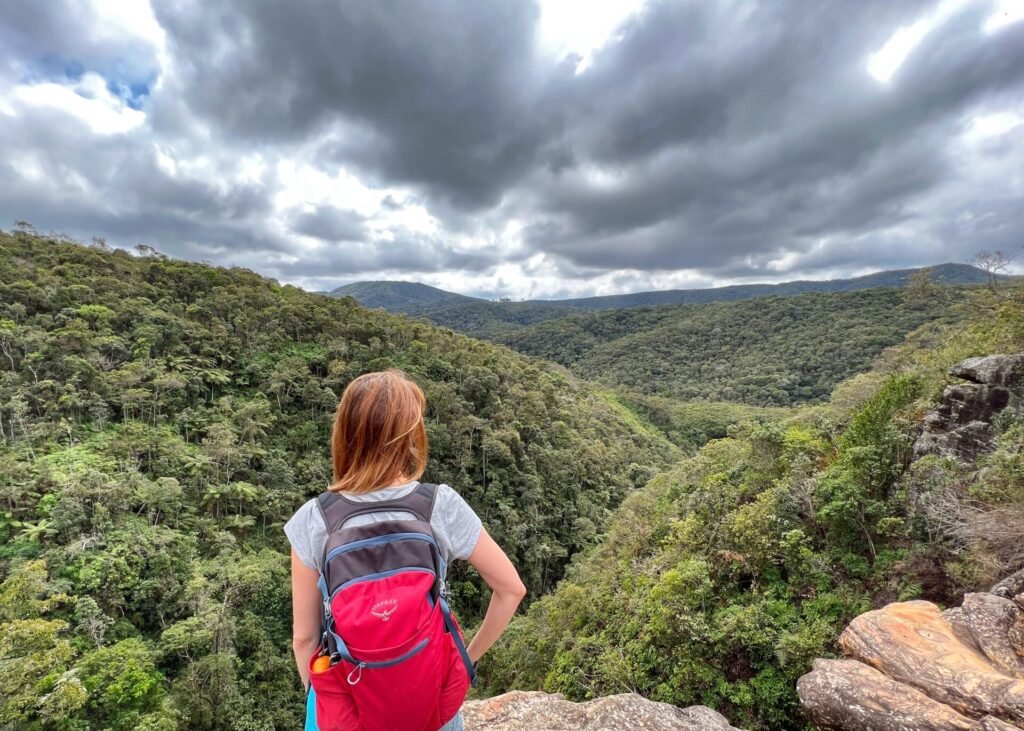

Mandy checking out the overlook. And Greg doing the same after a well earned snack.
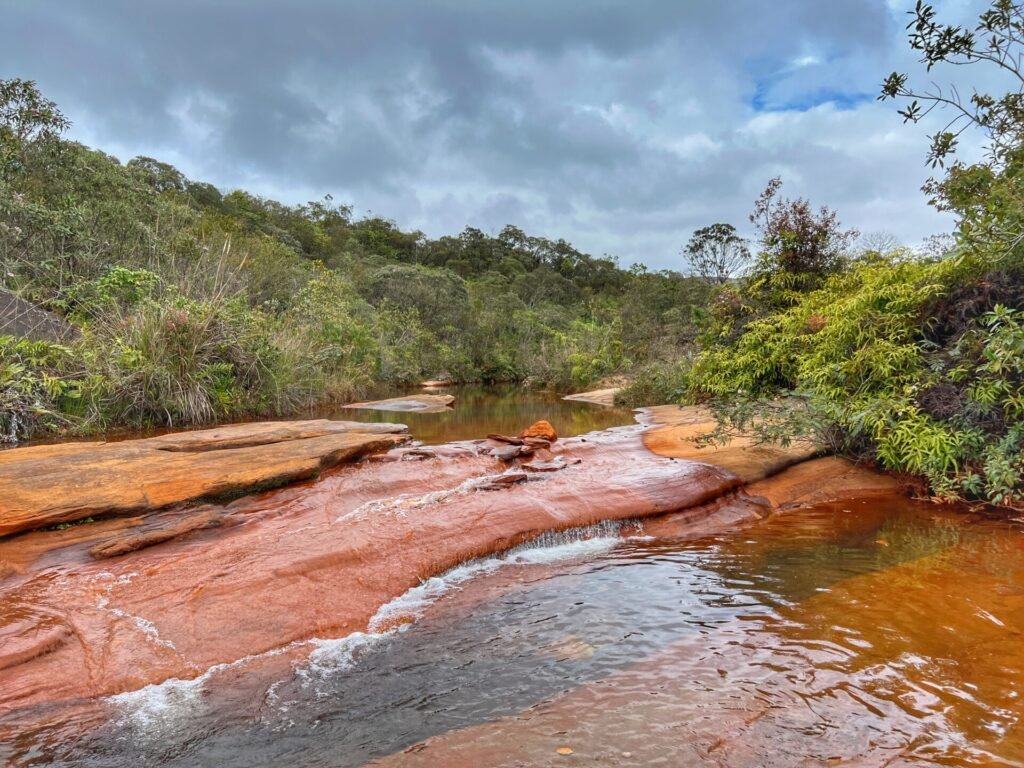
What a great place to play!!

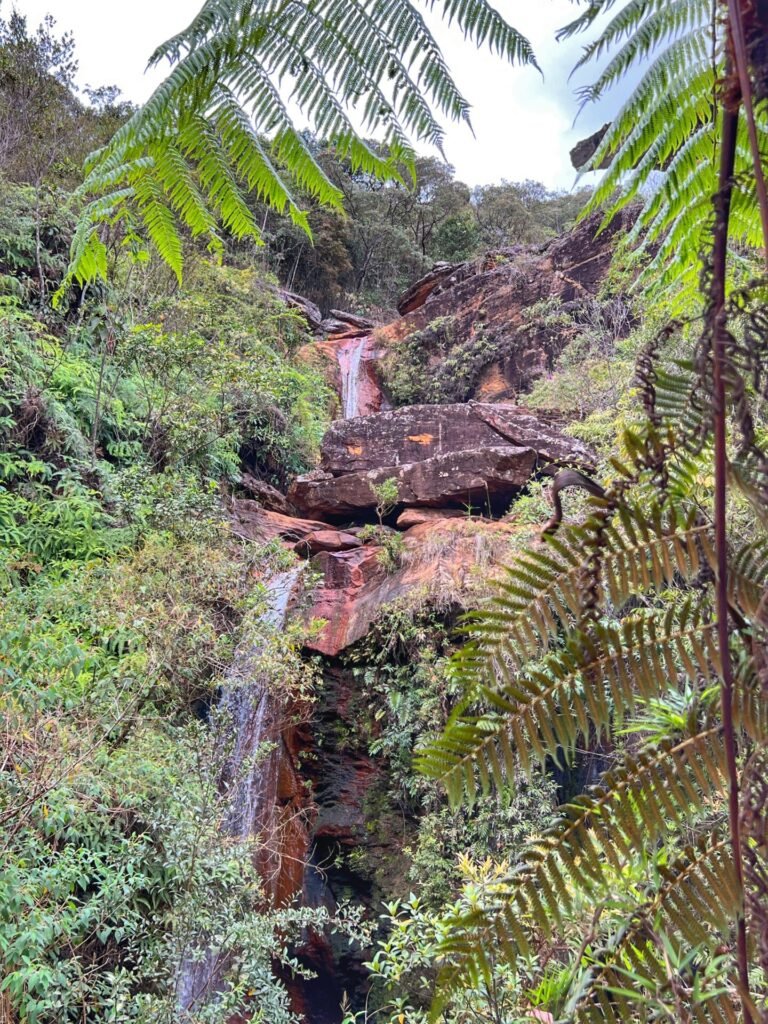
We then made our way to the middle waterfall, which was inundated with lots of squealing people. The waterfall, which was actually three in one was the one filled with people who didn’t mind stripping at any temperature.
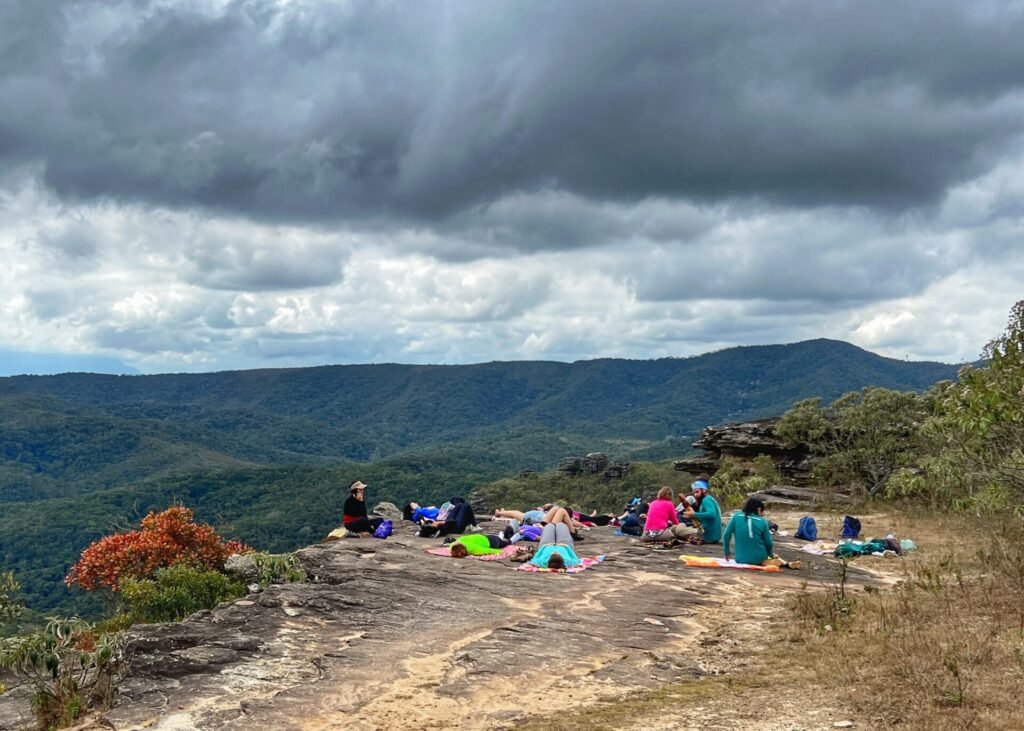
Mandy felt a bit envious of a group of yogis taking full advantage of the spiritual aura of this place.


The third waterfall we went to was actually the closest to the parking lot and by far the most interesting. Because Preto, our adopted dog for the day, was still following us and this involved some scrambling which could be dangerous for a pup, we opted to maneuver down separately into the cavern-like entrance, while the other tried to keep the dog, which everyone presumed was ours, out of trouble…

…and took photos of the gorgeous landscape and crocodile head jutting its head outside of the cave over the canopy.
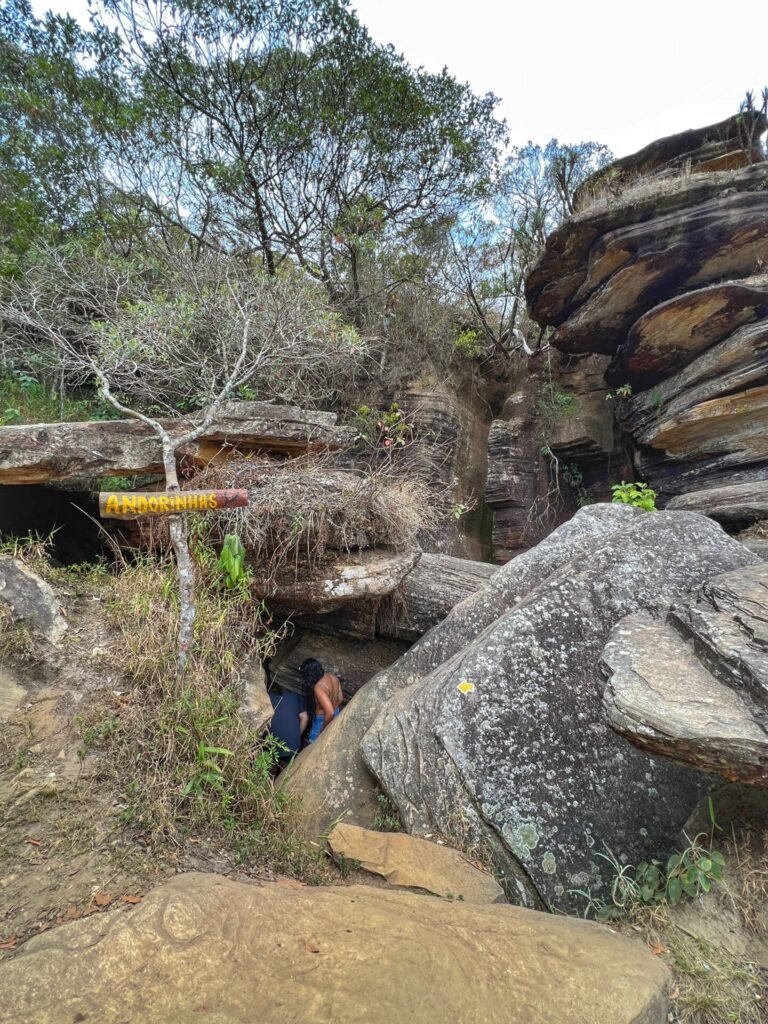

The piles of earth leading into the cave had a sign next to it that said “Andorinha’s” or “swallows” which implied that the waterfall was named after the number of swallows that use it as their bedroom.

And the astonishing waterfall itself down a slinky little slot canyon.


More sandstone rock pools. What a fun playground for Preto!
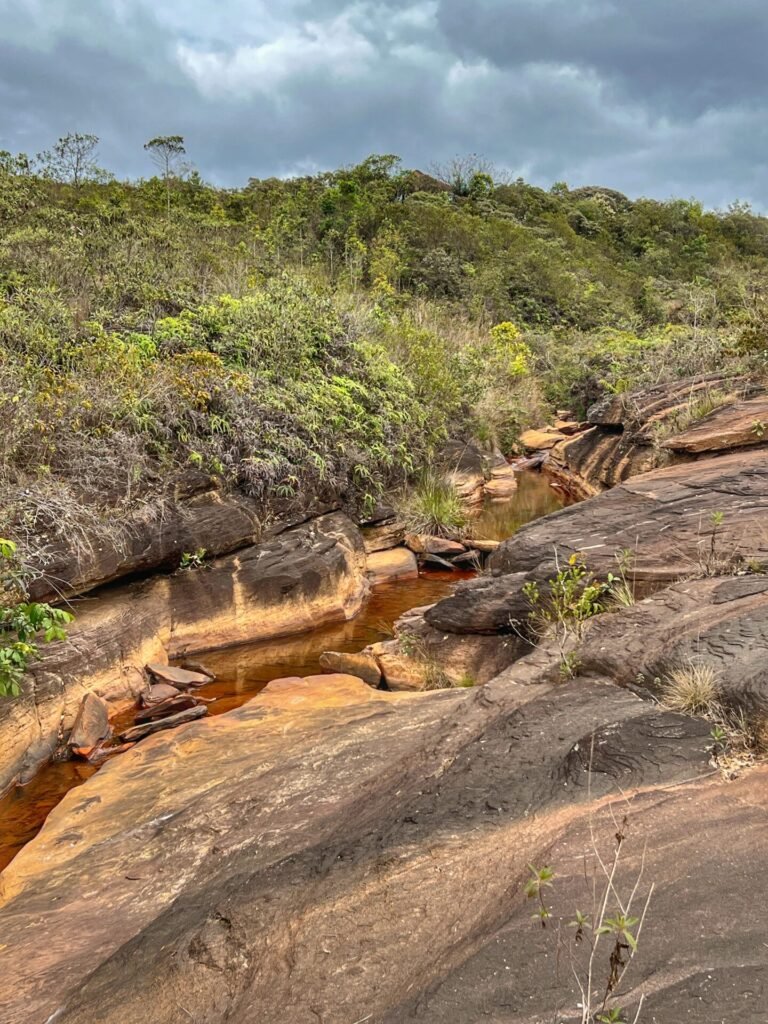

The geological formations around here were worth the trek in itself. Time to head back to Ouro Preto!

But not without a pit stop for a rewarding beverage!
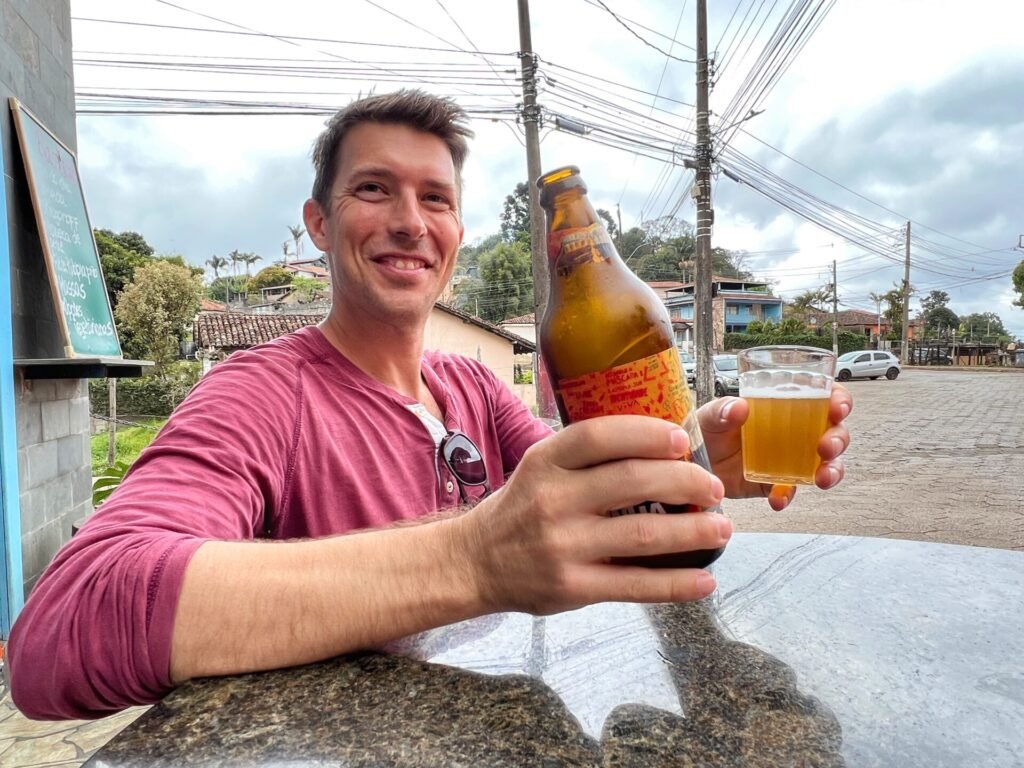
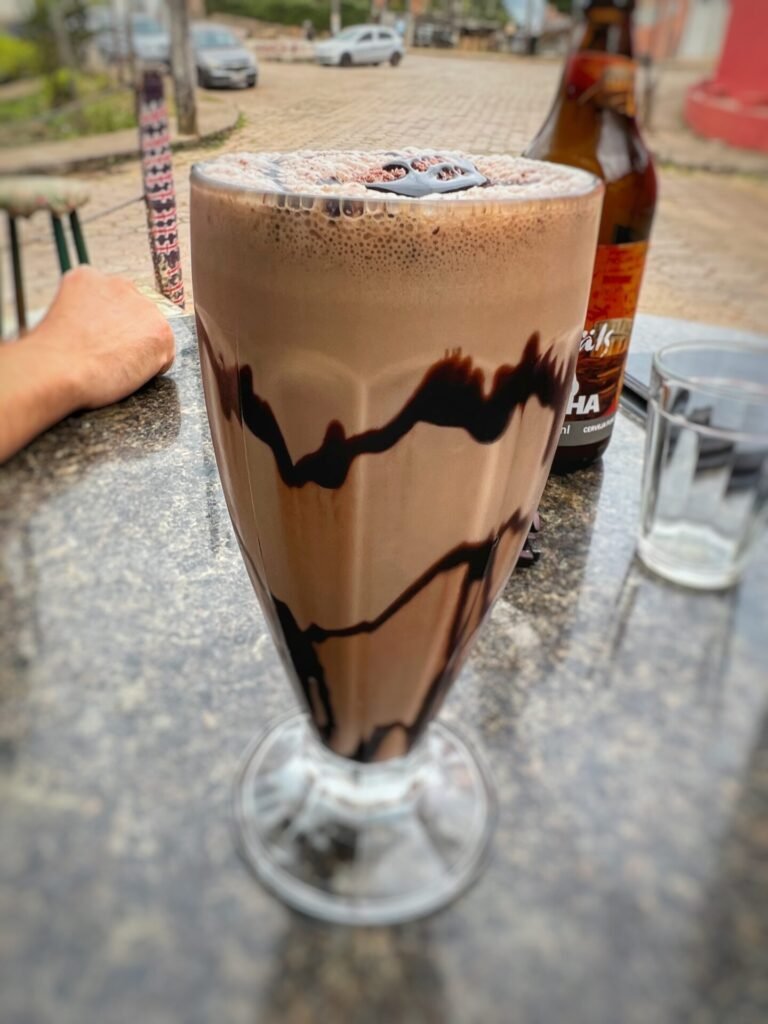
Greg chose a craft beer, of course. While Mandy tried something different and chose to slurp down a coffee milkshake. Both drinks were $7.
Mina do Bioca Mine Visit
One of the must do activities while visiting Ouro Preto is visiting the remains of one of the many gold mines. We chose Mina do Bioca, which is a tribute to “Só” Bjoca, a humble man from Ouro Preto who acquired the land in 1962 and unknowingly ended up rediscovering a set of underground mining galleries from the 18th century in the backyard of his new home.
It is possible to observe evidence of gold exploration, with tool marks left by enslaved people from the colonial period.

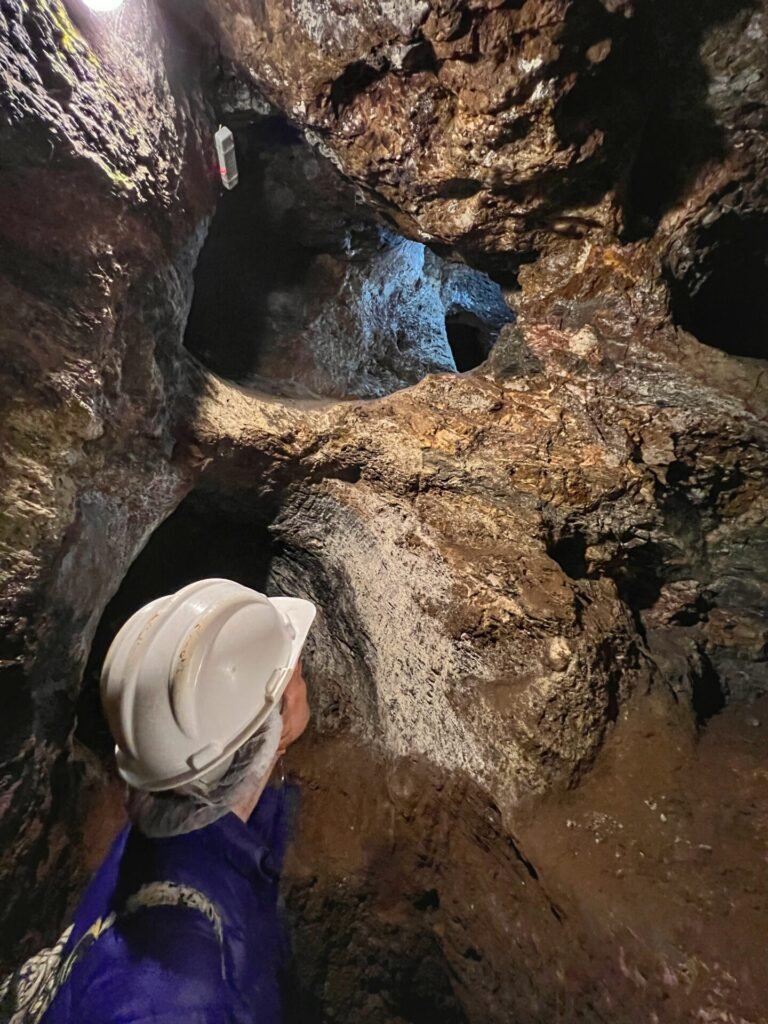
Ouro Preto, founded in 1711, means Black Gold. “Black” because when extracted from the ground, it was covered with a layer of iron oxide that is found in the city. And there was a LOT of it.


The gold was pretty much all taken by Portuguese colonists, who used slave labor. The slave labor started as young as five years old, because “little hands and small bodies were particularly useful in mining environments.” They worked endlessly, in the dark, using only small torches to see and wearing nothing, other than a shoulder bag used to collect the gold. (If they wore something, the Portuguese were afraid they’d steal.)

The more gold they collected, the more food they got for lunch. The food was typically Feijoada, which is now the Brazilian National dish, a stew of black beans served with the undesirable parts of the pig that nobody wants. Of course today, it’s commonly made with more desirable pieces.

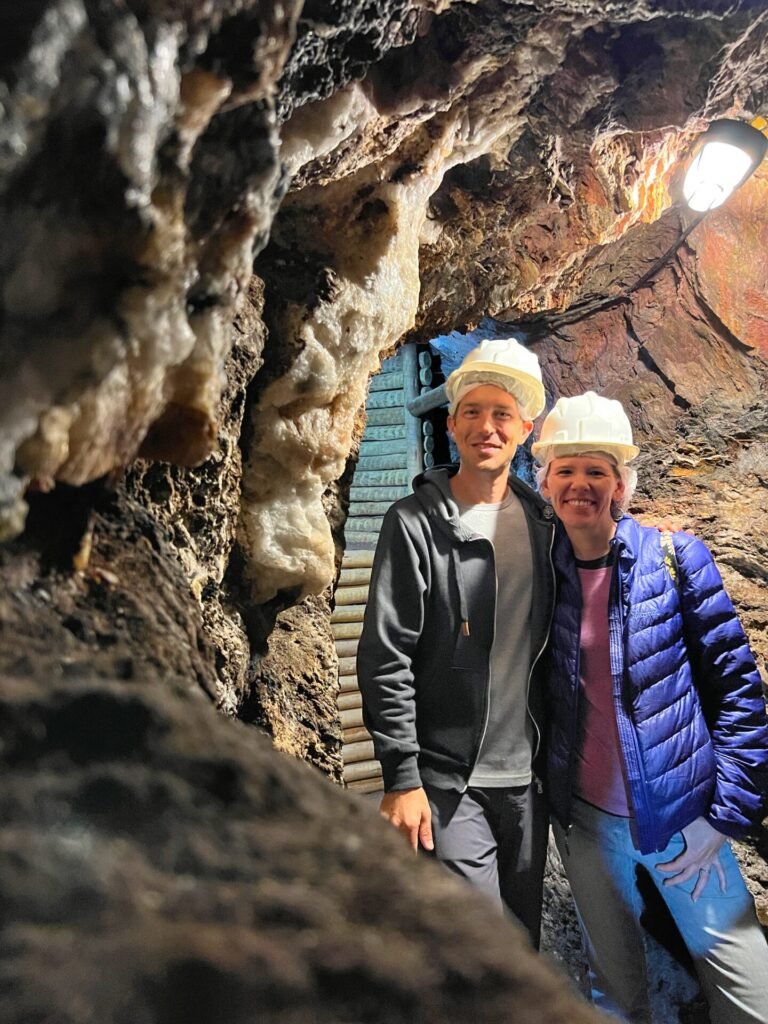
The entrance to the mines. We received an English speaking guide with our $25 entrance (2 tickets.) We looked pretty cool our hard hats.

The mine had long and narrow passageways.

The holes were used to place the candlelights. To keep from getting carbon monoxide poisoning, they would release canaries inside the mines and “look at the bird” periodically to see if it were still alive. When it died they knew they needed to get out. The expression, “open the mouth and look at the bird” is still used in Brazil, which means to heed warning or be careful.

Using a very strong magnet, our guide also showed us how the walls of the mines were still packed with iron ore.

One of the many mining galleries.

Our guide, Casseial, who was born in the current day capital of Minas Gerais, Belo Horizonte but today he lives in Ouro Preto which was the former capital of the state starting in 1720. We were amused to learn that pre-COVID, he also lived a nomadic life traveling throughout Brazil for four years.

Hand hold used to crawl throughout the tunnels and maneuver into tighter places.

Casseial also showed us where to find the three different colors of clays which were used for paint in the early days of Ouro Preto. This is why the entire town has many tones of these three colors.



The mine as seen from the outside…not even recognizable.

The view of Ouro Preto from the mines.
Conclusion
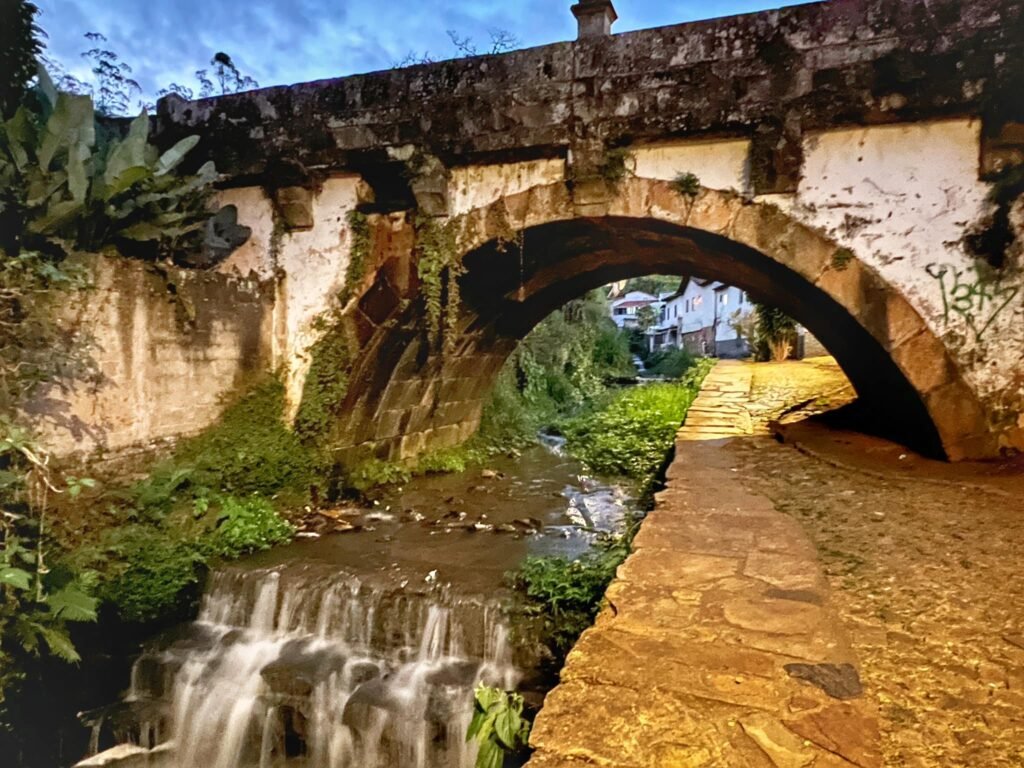
So…our final thoughts on the town itself? The truth is, contrary to what seems to be popular opinion, Ouro Preto was not our favorite place in Brazil…or even Minas Gerais. It seems that many people who visit maybe spend a day or two and don’t see behind the pretty polished center streets. Maybe that’s better?!
But for us, the cost for value, the ticks, the incessant dampness that saturated our things from humidity, the fact we were just feeling a bit travel fatigued to endure with OP’s hills, and the permeation of raw sewage that flowed like a river at its perimeter, just didn’t delight our senses. Thus, despite its shiny exterior, we much preferred Tiradentes, or neighboring Mariana for a longer visit.

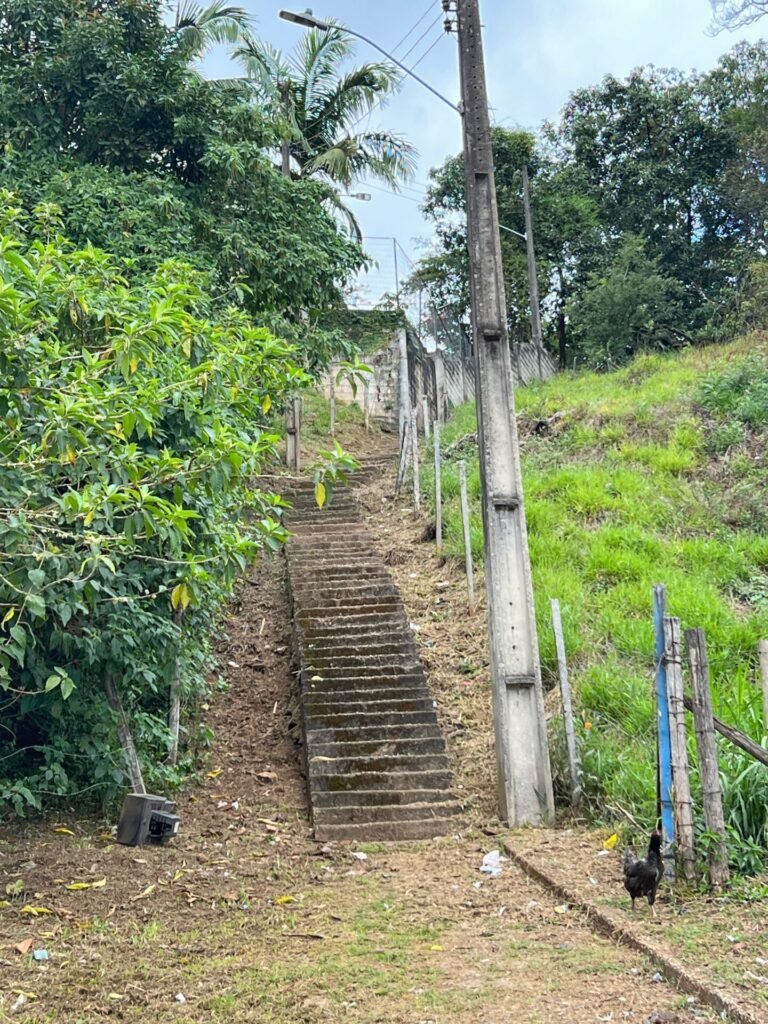
After five nights in Ouro Preto, we climbed out of the hole of the city to get to the upper streets where the bus station perched, which was a bit more of load with backpacks on, but we managed fine. Reason 39 we don’t carry roller bags. Beginning our trek in Ouro Preto out of the narrow winding inclines. It actuality, it only took about 15 minutes of uphill exertion.
The routes to Belo Horizonte, our final stop in Brazil, were frequent so we didn’t have to wait long to board our two hour bus for another $11/each. The going rate of buses in Brazil seems to be about $5/hour. What would crucify our budget that month.

